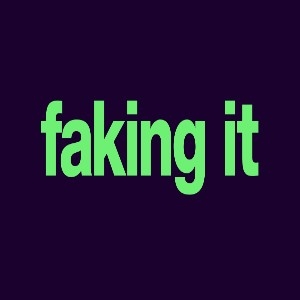Faking It: Pretending to Go To Work When You Don’t Have a Job
 In the 1997 blockbuster movie “The Full Monty,” Tom Wilkinson’s character loses his job but fakes having one to hide the truth from his wife.
In the 1997 blockbuster movie “The Full Monty,” Tom Wilkinson’s character loses his job but fakes having one to hide the truth from his wife.
He gets up every morning, puts on his suit, tucks his morning paper under his arm and heads out, only to return home after five p.m. In today’s economy, with the unemployment rate rising steadily from 7.9 percent in January to 9.4 in May, almost everyone knows someone who is out of work. Is there still a need to be faking it? For some, yes.
Sara Clemence, co-founder of Recessionwire, a website that provides news, advice and perspective to urban professionals affected by the downturn, says that even though being unemployed has become more common, “it’s been a real ego blow for a lot of people.” Clemence says she’s seen a few women “faking it” or pretending to go to work when they don’t have jobs. Clemence says that while faking it may seem like a healthy response to losing a job, the people who do it are in denial.
“There’s ‘faking it’ and then there’s ‘faking it’,” she says. She draws a distinction between the people who are embarrassed to admit they were laid off and therefore dress for work every day despite having no destination, and the people who get dressed every day to look for work or do consulting.
“I know a (laid off) Wall Streeter who checks Bloomberg and reads The Financial Times daily,” she says. “That seems like a healthy response.”
Alison Blackman, author of the ebook “YOU ARE THE PRODUCT-How To Sell Yourself To Employers,” says it is important to maintain a routine after you’ve lost your job. But she and most career experts agree that carrying an empty briefcase and hiding out in Starbucks all day is counterproductive.
There has to be a balance between your professional habits that served you during employment and the downtime you are suddenly experiencing. That balance, says Clemence, is somewhere between “lying on your sofa in PJs and getting in a suit and pretending to go to work.” She says the people who come to terms with their situation, and realize there are many others in the same situation, are the happiest. That’s because these people are able to find productive ways to use their unplanned time off.
Says Clemence, “It’s about acknowledging the new reality without being overwhelmed by it. I see people getting excited about other projects, even though might not be the things they end up doing.” She cites another unemployed Wall Streeter who has found the time to dabble in an Internet start-up, an interest there was never time to pursue.
Clemence, who was laid off in December from Conde Nast Portfolio says scheduling a vacation right after your last day of work can be a great transition plan. That way she says, “You’re not going from 60 to zero at home. It’s the kind of day you crave when you are working – not having to set the alarm. But when it’s not your choice, it can be a real shock.”
Of course, attitudes start to shift the longer someone goes without earning a paycheck. Clemence says, “There were so many people laid off in the fall and the end of year. They are now hitting the six month mark. I think initially there can be real sense of liberation and opportunity but once you’ve been laid off for a handful of months and you are starting to run out of savings, there’s been a real attitude shift.”
So while in the first few months paying the bills and covering expenses can feel like success, eventually you need to recreate a long-term plan. Hopefully, that plan won’t include faking it.
by Liz O’Donnell (Boston)


When I was laid off in the tech/post 9-11 bust I did do that. I scheduled a vacation and it was cathartic. I’d been laid off before and found a job within 2 months so I wasn’t worried.
But two months later I was grateful for a short-term consulting assignment and had wished I hadn’t spent anything on the vacation, even though it was relatively frugal.
I think if it were to happen today, I wouldn’t take time off unless it had already been scheduled. After a few weeks I’d be the one getting up, dressed, and to the outplacement office.